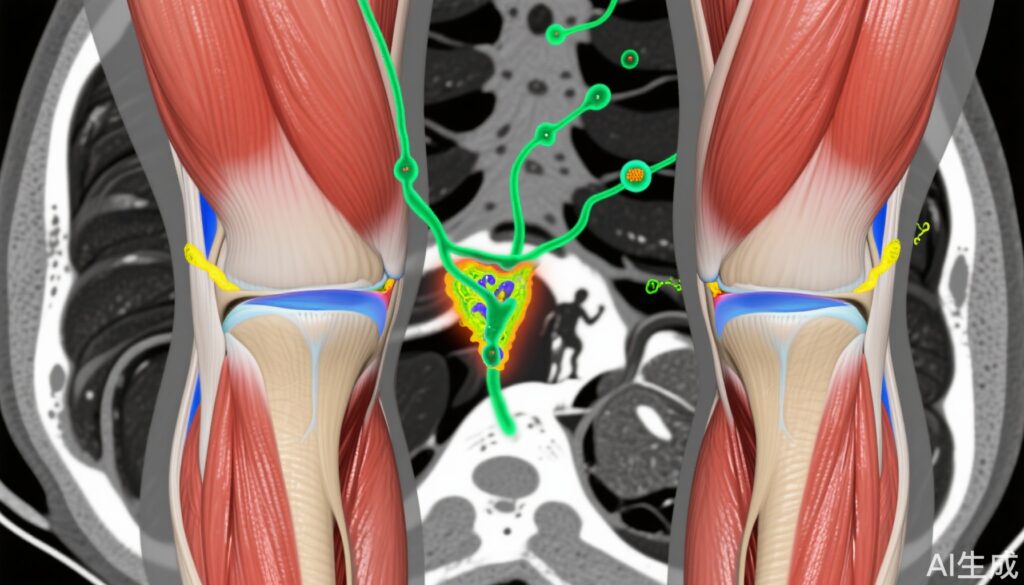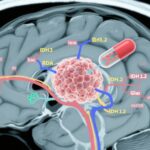Highlight
- Parathyroidectomy in postmenopausal women with primary hyperparathyroidism significantly improves lower limb muscle strength, endurance, and volume.
- Muscle fat content decreases post-surgery, despite no reported changes in physical activity.
- Molecular pathways associated with exercise-induced muscle remodeling are activated following surgery.
- Routine assessment of skeletal muscle function may inform surgical referral and optimize outcomes in aging populations.
Background
Primary hyperparathyroidism (PHPT) is a common endocrine disorder, especially in postmenopausal women, characterized by excessive secretion of parathyroid hormone (PTH) leading to hypercalcemia. Beyond classical complications such as nephrolithiasis and osteoporosis, PHPT is increasingly recognized for its impact on skeletal muscle health—manifesting as muscle weakness, fatigue, and reduced physical function. These symptoms contribute to increased fall risk, morbidity, and impaired quality of life, particularly in older adults. Despite the clear physiological rationale, the reversibility of muscle dysfunction following parathyroidectomy has remained inadequately characterized at both clinical and molecular levels.
Study Overview and Methodological Design
This prospective observational study, conducted by Björnsdotter-Öberg et al. in Sweden, addressed the clinical and transcriptomic effects of parathyroidectomy on skeletal muscle in 21 postmenopausal women (mean age: 68 years) diagnosed with PHPT. The study design included:
- Comprehensive assessments of lower-body muscle strength (timed stands and peak torque tests in 17 participants)
- Muscle composition analysis via MRI in 16 participants
- Muscle biopsies for transcriptomic profiling (before surgery and at 3-month follow-up)
- Anthropometric and biochemical measurements (ionized/total calcium, PTH, vitamin D, creatinine)
- Physical activity quantification using standardized questionnaires
No explicit control group was included, but intra-individual comparisons were made pre- and post-surgery. The primary endpoints were changes in muscle strength, volume, fat fraction, and gene expression profiles at 3 months post-parathyroidectomy.
Key Findings
Parathyroidectomy led to robust biochemical normalization, with significant reductions in ionized and total calcium (P < .001), PTH levels (P = .013), and increases in vitamin D (P < .001) and creatinine (P = .003). Notably, patients experienced marked improvements in muscle function:
- Timed stands test: Time decreased from 25.5 seconds to 20.1 seconds (P < .001)
- Quadriceps maximal strength and endurance: Both increased significantly (P = .002 and P = .004, respectively)
- Muscle volume: Increased from a mean of 1193 cm³ to 1217 cm³ (P = .023)
- Muscle fat fraction: Declined significantly (P = .013)
Importantly, these functional and compositional improvements occurred despite no significant change in self-reported physical activity levels (P = .156).
At the molecular level, transcriptomic analysis of muscle biopsies identified 981 differentially expressed genes post-surgery. Pathway analysis revealed activation of gene networks involved in muscle remodeling and metabolism, resembling those triggered by exercise training.
Mechanistic Insights and Pathophysiological Context
PHPT-induced sarcopenia is thought to result from the catabolic effects of elevated PTH on skeletal muscle, including increased protein degradation and impaired mitochondrial function. The observed post-surgical improvements in muscle strength, volume, and reduced fat infiltration align with the reversal of these catabolic influences. The transcriptomic findings suggest that parathyroidectomy not only corrects the biochemical abnormalities but also reactivates molecular programs associated with muscle regeneration and growth—many of which overlap with those induced by physical exercise. This molecular mimicry may explain the rapid and pronounced clinical benefits observed, even in the absence of increased physical activity.
Clinical Implications
These results have significant implications for the management of PHPT in aging women:
- Surgical intervention should be considered not only for classical targets (bone, kidney) but also for prevention and reversal of muscle decline.
- Routine assessment of muscle strength and composition could identify patients at risk of sarcopenia who may benefit most from timely surgery.
- The findings support current guidelines recommending parathyroidectomy in symptomatic patients, and suggest potential benefit in select asymptomatic individuals with muscle involvement.
- Improving muscle health post-surgery may reduce falls, morbidity, and healthcare utilization—supporting healthier aging trajectories.
Limitations and Controversies
The study’s strengths include its prospective design, multimodal assessment, and integrated molecular analyses. However, several limitations warrant consideration:
- Small sample size and lack of a non-surgical control group limit generalizability and causality inference.
- Short follow-up (3 months) precludes assessment of long-term durability of muscle improvements.
- Reliance on self-reported physical activity may underestimate subtle behavioral changes post-surgery.
- The study population (older Swedish women) may not reflect outcomes in men or other ethnic groups.
Despite these caveats, the results are biologically plausible and consistent with smaller prior reports and mechanistic studies.
Expert Commentary or Guideline Positioning
The authors emphasize the need for a broader view of surgical referral criteria in PHPT, suggesting that muscle health should be integrated into decision-making algorithms. This aligns with recent guideline statements (e.g., American Association of Endocrine Surgeons, Endocrine Society) that recognize non-classical symptoms—such as neurocognitive and musculoskeletal manifestations—in surgical candidacy evaluation.
Conclusion
Parathyroidectomy offers tangible benefits for muscle strength and composition in postmenopausal women with PHPT, mediated in part by the activation of exercise-mimetic molecular pathways. Incorporating muscle function assessments in the management of PHPT may optimize patient selection for surgery, reduce morbidity, and support healthier aging. Ongoing research should focus on long-term outcomes, diverse populations, and optimal timing of intervention.
References
Björnsdotter-Öberg S, Koman A, Skorpil M, Rydén H, Lanner JT, Krook A, Nilsson IL, Pillon NJ, Nylén C. Parathyroidectomy Restores Muscle Strength and Transcriptome in Individuals with Primary Hyperparathyroidism. J Clin Endocrinol Metab. 2025 Jul 21:dgaf418. doi: 10.1210/clinem/dgaf418.
Additional relevant literature:
– Bilezikian JP, Brandi ML, Eastell R, et al. Guidelines for the management of asymptomatic primary hyperparathyroidism: summary statement from the Fourth International Workshop. J Clin Endocrinol Metab. 2014 Oct;99(10):3561-9.
– Romagnoli E, Cipriani C, Nofroni I, et al. “Muscle strength and physical performance in primary hyperparathyroidism before and after parathyroidectomy: a prospective controlled study.” J Clin Endocrinol Metab. 2011 Aug;96(8):E1291-8.



